Shanghai has long been a city influenced by foreign cultures. From being one of the first cities in China to open its port to the outside world, to becoming the bustling “ten-mile foreign settlement,” various international cultures have merged. The old Western-style buildings on the Bund and the modern skyscrapers in Pudong complement each other, while the street life of the old town mingles with global high-end cuisine and the latest fashion trends. East and West come together in a spectacular fusion.
1. Best Time to Visit
As a global metropolis, Shanghai doesn't have strict seasonal limits, but every spring, the wintersweet, cherry blossoms, and magnolias bloom in succession, creating beautiful sights. Autumn is the best time to taste the famous hairy crabs, as it is said, "when the autumn wind blows, the crab legs itch." At this time, the crabs are rich in roe, thick with fat, and the meat is deliciously tender.
From July to August, the temperatures in Shanghai are high, and the humidity is intense, making it less suitable for outdoor activities. The winter months of January and February are the coldest, requiring extra care for warmth. June and July are the rainy season, so carrying an umbrella is advisable.
2. How to Get to Shanghai
△By Air:
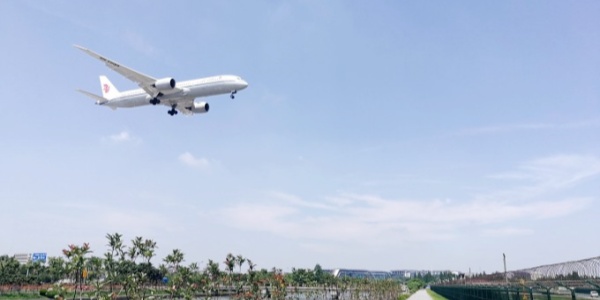
Shanghai is one of China's most important transportation hubs, with over a thousand flights landing and taking off daily. The city's two major airports handle both domestic flights to other parts of China and international arrivals and departures.
● Shanghai Hongqiao International Airport: Located in the western part of the city, this airport mainly handles domestic flights and some international routes to Japan, South Korea, and Hong Kong/Macau. It is closer to the city center. The most convenient way to get to the city is by taking Metro Line 10 or Line 2, with both lines stopping at the airport terminals.
● Shanghai Pudong International Airport: Situated in the eastern part of Shanghai, about 30 kilometers from the city center, Pudong is the main hub for international flights. It serves 73 international cities and 62 domestic ones.
Tip: For overnight stays, Terminal 2 has reclining chairs with charging ports. A budget hotel is also available between Terminal 1 and Terminal 2.
From Pudong to Hongqiao Airport:
● Airport Line: A special shuttle bus takes about 1 hour between Pudong and Hongqiao Airport.
● Metro Line 2: This line connects both airports but takes about 1 hour and 40 minutes due to multiple stops and a transfer at Guanglan Road station.
● Maglev + Metro: You can take the Maglev train from Pudong Airport to Longyang Road and transfer to Metro Line 2 for faster travel.
△By Train:
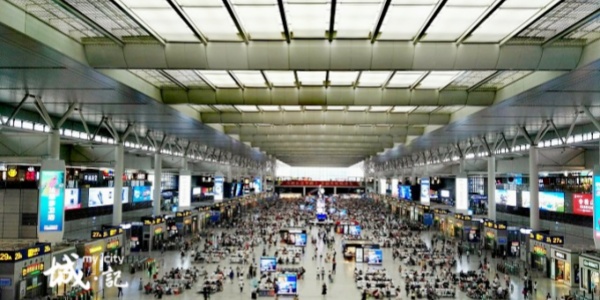
Shanghai has four major railway stations: Shanghai Station (New Station), Shanghai South Station, Shanghai Hongqiao Railway Station, and Shanghai West Station.
● Shanghai Hongqiao Railway Station: Mainly handles high-speed trains to various cities in China, such as Guangzhou, Beijing, and Hangzhou.
● Shanghai Station: This is the main station, with more than 70 trains departing daily for major cities.
● Shanghai South Station: Handles long-distance trains, particularly to southern China.
● Shanghai West Station: Serves trains from Shanghai to neighboring cities like Suzhou and Nanjing.
△By Long-Distance Bus:
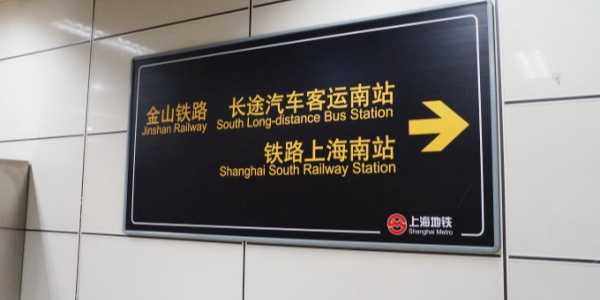
Shanghai has over 40 long-distance bus stations. The main terminals are Shanghai Long-Distance Bus Station, South Bus Station, and Hengfeng Road Bus Station, which serve routes to nearby provinces, especially Jiangsu and Zhejiang. There are also many comfortable buses for short trips to nearby tourist destinations.
△By Ferry:
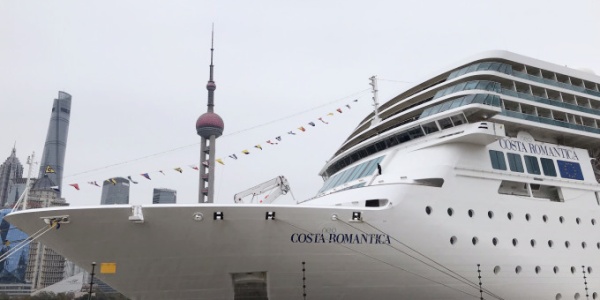
Shanghai is a key port for both domestic and international ferries, with two major international passenger terminals: Shanghai Port International Passenger Terminal and Wusongkou International Cruise Terminal. These terminals offer services to destinations like Japan, Korea, Taiwan, Europe, and Southeast Asia.
3. Local Transportation in Shanghai
△Common Transportation Options
Ride-hailing services and taxis are readily available in Shanghai, with multiple platforms to easily book a ride. The city’s bus and metro systems are extensive, with 14 subway lines currently in operation. Shared bikes are also commonly found throughout the city. With the Alipay "travel code," you can seamlessly use buses and the metro in Shanghai.
△Spring and Autumn City Sightseeing Bus
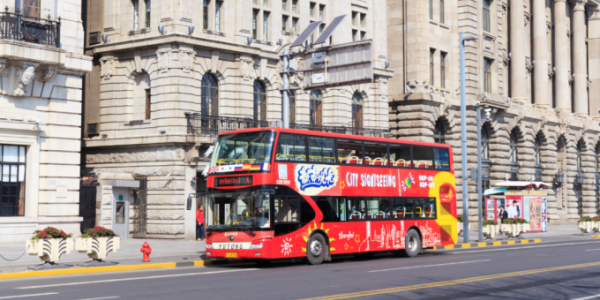
One popular way to explore Shanghai is by taking a sightseeing bus. The Spring and Autumn City Sightseeing Bus features red, double-decker buses with 4 sightseeing routes (1, 2, 3, and 5) and 2 tourist routes that link up several well-known landmarks. This allows you to experience the city's architecture from different perspectives.
△BUS TOUR
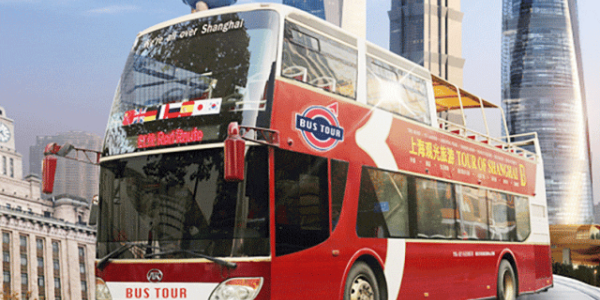
The Shanghai BUS TOUR has three routes: the Red Line, Green Line, and Blue Line, with a bus departing every 30 minutes. The Red and Green lines serve the Puxi area, while the Blue line covers Pudong.
● Red Line
Operating Hours: 9:00 AM - 9:00 PM (Full-day ticket includes night views)
Stops: Nanjing Road (New World City), People’s Square, People’s Park, Nanjing Road Pedestrian Street, Shiliupu (Puxi River Cruise Terminal), The Bund (Bund Sightseeing Tunnel), The Bund (General Labor Union), Yuyuan Garden, Xintiandi, Nanjing Road (New World City)
● Blue Line
Operating Hours: 9:30 AM - 5:30 PM
Stops: The Bund (Bund Sightseeing Tunnel), The Bund (General Labor Union), Oriental Pearl Tower, Shanghai Tower, Jin Mao Tower, Old Wharf, Shiliupu (Puxi River Cruise Terminal), The Bund (Bund Sightseeing Tunnel)
● Green Line
Operating Hours: 9:15 AM - 4:45 PM
Stops: Nanjing Road (New World City), Shanghai Museum, Huaihai Road, Jing’an Temple, Shanghai Exhibition Center, Xintiandi, Nanjing West Road, People’s Park, Nanjing Road (New World City)
○ Ticket Prices:One-day ticket: 100 RMB (24-hour pass with unlimited hop-on/hop-off)
○ Two-day ticket: 180 RMB (48-hour pass with unlimited hop-on/hop-off)
△Shencheng Sightseeing

The Shencheng Sightseeing Double-Decker Bus operates with two routes that cover many of Shanghai’s top attractions, making it easy to transfer between them.
How to Buy Tickets: Simply purchase tickets from the driver at the bus stops.
Note: The buses offer audio commentary along the way, and you can find more information on their WeChat account “Shencheng Sightseeing.”
△Dongba (Donbar)
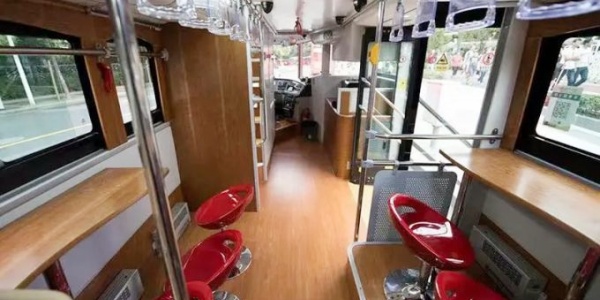
“Dongba Donbar,” previously called the “Lujiazui Tourist Loop,” uses British-style double-decker buses to provide a fixed route with unlimited hop-on and hop-off privileges. The service includes a professional guide, free coffee, Wi-Fi, and charging stations.
Fixed Route: Dongchang Road Ferry (connecting City God Temple and The Bund) - Jin Mao Tower, Shanghai Tower, World Financial Center - Oriental Pearl Tower (Metro Line 2) - Ocean Aquarium - Dongchang Road Ferry
Operating Hours: 9:00 AM - 8:30 PM
△Ferries
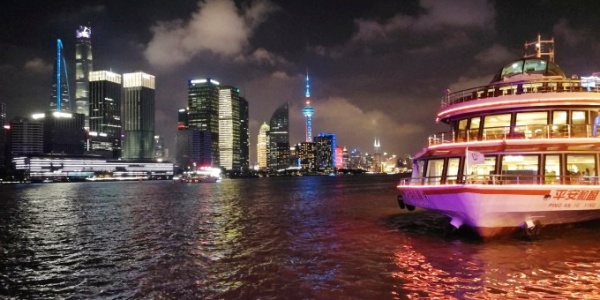
There are several ferry terminals along the Huangpu River that provide transportation between the two sides of the river. Currently, there are 17 ferry routes, and ferries accept the Shanghai Public Transport Card. Though no longer the primary means of transportation, ferries still offer a charming Shanghai experience.
● Ferry Ticket Prices:Pedestrians: 2 RMB
● Electric Bikes/Bicycles: 2.8 RMB
● Motorcycles: 4 RMB
For more details, check the WeChat account “Shanghai Ferry” for terminal and route information.
△River Cruises
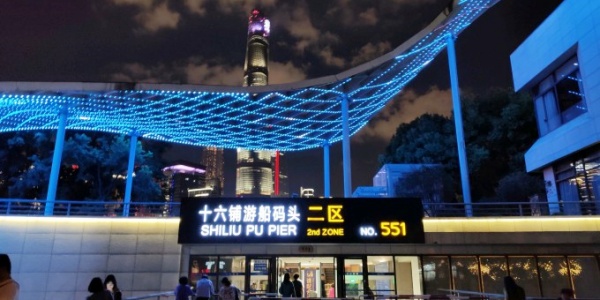
The Huangpu River, often called Shanghai’s "mother river," is the site of river cruises offered by the Shanghai Huangpu River Ferry Center.
Boarding Terminal: 89 Waima Road (Shiliupu Tourist Center, Gate 3), south of Dongmen Road Ferry Station
Address: 171 Zhongshan South Road, Shiliupu Water Tourism Center
Public Transport: Bus routes 33, 55, or 307 to Shiliupu Terminal
Ticket Price: 100 RMB
